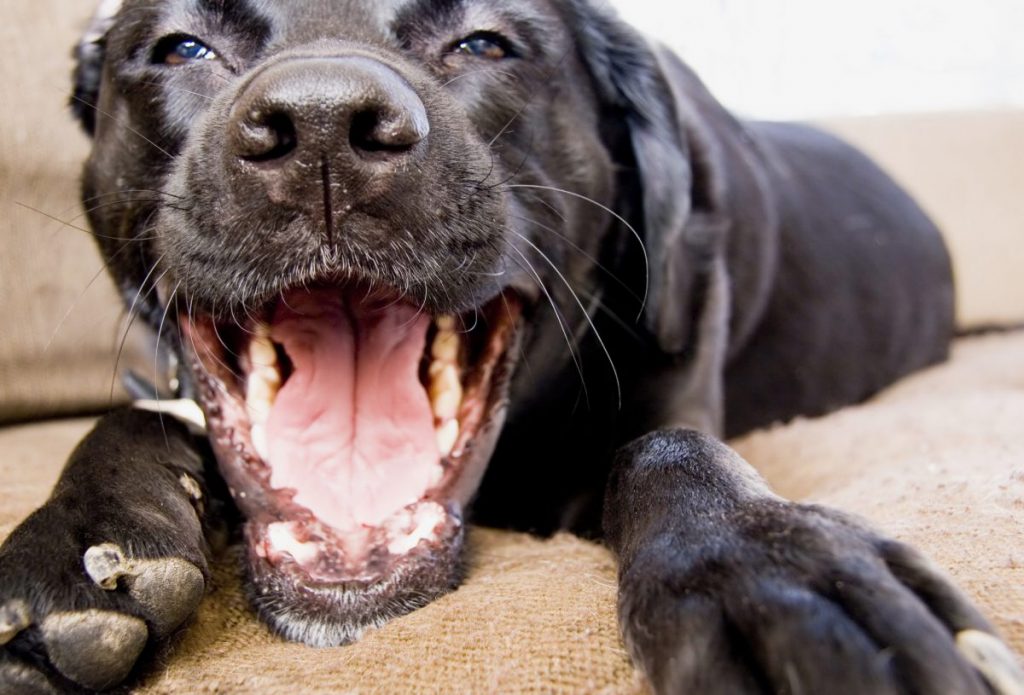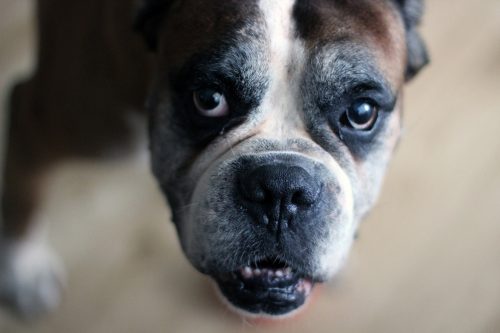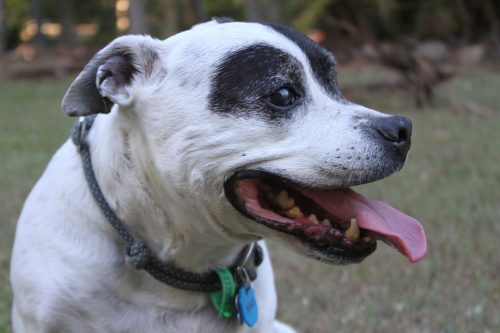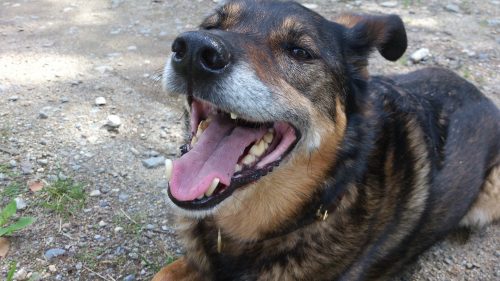You have probably heard the saying “you can’t teach an old dog new tricks.” While it is true that a dog’s hearing and sight can suffer in old age and that they become more susceptible to a variety of disorders and diseases, dogs can be trained at just about any age.
What most human owners don’t realize is that, despite the seemingly sluggish demeanor of older pups, as long as your dog is awake, he is learning.
Granted, there are exceptions. Some dogs may be physically unable to be trained because they suffer from physical conditions that limit their mobility and prevent them from exerting themselves physically. This includes:
- Arthritis
- Hip dysplasia
- Pain in joints and muscles
- Heart problems
- Obesity
Other dogs may suffer from dementia or other forms of canine cognitive dysfunction that prevent them from learning properly. These disorders manifest in symptoms of disorientation, restlessness, loss of housetraining, and other behavioral changes that are sadly often explained away as “senility.”
But don’t sell your pup short! Even if he is getting on in his years, he can still surprise you with new tricks and behaviors. Read on to learn some tips and information for training your older dog.
The Patience of Unlearning
The main problem with training older dogs is that they’ve lived for longer and experienced more things. All those years of personal history just mean more opportunities for your dog to have picked up bad behaviors or learned improperly along the way.
Training your old pup often has to start with unlearning or “untraining” undesirable behaviors. That may mean extra time, which some owners may not have the patience for.
And that’s the first real tip for training your dog, young or old: be patient. You and your dog will make mistakes during the training process, and that is totally okay. It truly is a process, one that not only results in new tricks and better behavior, but also a closer bond between you and your pup. Training takes patience and consistency. As long as you do your best, your pup will follow suit.
Factors Influencing Mature Canine Training
As mentioned above, the main factor is physical and mental health. Make sure you talk to your vet before embarking on any sort of training program to make sure that your pup is physically and mentally able.
Your own skills and abilities are also a big factor. While you don’t have to be a master dog trainer, you do have to be good at communicating with your dog. Your dog can’t read your mind, and they certainly can’t do it on their own. Communication basically means providing reinforcement when it’s appropriate and in a timely manner. Staying consistent with this communication makes it easier for a dog to learn, regardless of his age.
This leads into another factor: the methods you use for training. It’s easy to get frustrated, but never resort to any form of verbal or physical punishment. It’s damaging to your pup and to your overall relationship, and it’s just plain not right. Studies and anecdotal evidence also show that dogs trained with positive reinforcement are more willing to keep on learning new things.
By contrast, punishment is more likely to cause your dog to shut down or be otherwise unwilling to learn new behaviors. Always stick with positive reinforcement throughout your training.
One factor that also influences your old dog’s training is what you’re actually trying to teach them. Teaching new behaviors is much easier than changing old behaviors that your dog has been reinforced for throughout his entire life. This is where the unlearning comes into play. It’s not impossible by any means, but it can be much more challenging.
General Obedience Training for Older Dogs
Some dogs have lived rough, unloved lives before being taken into a shelter or dog rescue and eventually ending up in your home. Some dogs won’t know what it’s like to wear a collar or have good food and belly rubs readily available.
Others that may have had a better life may still be unfamiliar with basic skills and commands. This can all lead to acting out or general undesirable behaviors, from jumping on guests to pulling on your leash to refusing to listen to you.
This is where patience and consistency come into play. Puppies do learn quickly and are easier to control, but the good news is that older dogs can concentrate for longer, where puppies tend to have much shorter attention spans. Start by teaching your dog to sit. It’s the simplest for to teach and for your dog to grasp.
Continue with down, stay, and come. Make a schedule, setting aside some time every day to teach your pup. Instead of shoving four or five different commands into a lesson, stick with one (or a maximum of two) command. Any more and you will just confuse your dog and frustrate yourself.
Spend each lesson performing several repetitions of the chosen command, and make sure every lesson is fun for your pup. Dispense plenty of praise, treats, and belly rubs. If you’re trying to teach a new command that your dog just isn’t getting or has trouble with, end the lesson with a command they do know and go extra with the praise and treats.
After the lesson, have a short bit of playtime to help your dog relieve any tension or steam. This also ensures that your lesson ends on a positive note and deepens the bond you share.
Housebreaking and Crate Training
Housebreaking is one of the initial worries for dog owners. The good thing about older dogs is that they generally have better control over their bladders and bowels, which ultimately saves you a lot of time and worry.
Thankfully, you have the easy and effective solution of crate training. Going back to the basics of crate training is a great way to train your dog to go to the bathroom outside. Crate training works by tapping into your dog’s natural instinct to not soil their den. Even if they really need to go to the bathroom, most dogs will hold it when they are confined in their crates, preventing any accidents late at night or when you’re not home.
That said, don’t let your dog suffer. When you do get the opportunity, get a leash on your dog and let them outside.
Some general guidelines for crate training your pup:
- Find a crate that is sturdy and easy to clean up.
- Keep a good supply of products that remove odor and urine stains.
- Crate your dog whenever you cannot supervise him (when you sleep at night or have to leave him home alone). Take him out to go potty as soon as you uncrate him.
- Don’t allow your dog free roam of your whole house at first.
- Keep a predictable daily routine.
- Take at least four potty breaks every day, more if he has known bladder or incontinence issues.
- Encourage him to go potty by staying upbeat, calm, and positive.
- If he doesn’t go during his potty breaks, be more aware when you’re back inside.
- Keep some washable chew toys in his crate along with his bed and some blankets.
- Recognize the difference between unnecessary whining and actual separation anxiety.
General Tips for Training an Older Dog
Most tips for training older dogs coincide with training dogs of any age, but here are some tips to remember when training a dog with a little more gray in his fur:
Set boundaries and rules early: Older dogs could probably do things in their previous homes that would be considered improper in your home. That could include jumping on guests, barking at doorbells, or chewing on furniture. Teach your pup the rules for your home as soon as you bring them home. It will take some work, but the earlier you start, the sooner your dog will settle into desirable behaviors.
Take a walk in your dog’s shoes: Before you train your dog and change any undesirable behavior, understand your dog’s perspective. Try to understand what your dog gets from any behavior. All dogs have a reason for performing any sort of behavior. Usually, it’s the promise of food, but it could also be caused by physical health issues or canine anxieties. Use that awareness to help your training and to build more of an empathic bond with your pup.
Use behavioral cues: Putting visual, auditory, and verbal cues to a behavior can help your dog learn quicker. However, older dogs may not respond to cues for a variety of reasons. Most times, the dog may not have associated the cue with the behavior yet.
In this case, your pup has to learn the behavior first and then you can teach them to associate it with the verbal or visual signal. Other times, the cue may not work in all settings. For example, your dog may react perfectly fine to a cue at home, but he may not react when you’re outside or somewhere new with more distractions.
Un-minimize your cues: In dog obedience classes, most instructors will tell you to minimize your cues, making them subtle and clean. However, as your dog gets older, they may have trouble seeing or hearing cues. Try more exaggerated movements.
Socialize your dog: Socialization is a lifelong process that can help your dog grow and can even balance out certain bad behaviors. Good socialization often comes down to exposure, which isn’t always easy with older dogs and mainly depends on their personality and temperament.
While some dogs readily take to new situations, others are more shy, anxious, defensive, or protective. Try to ease your dog into socialization opportunities. It could be just as easy as taking regular walks at the park. Schedule regular play dates with other dogs.
From there find as many opportunities as possible for your dog to interact with other dogs and people. However, never force your dog into situations that scare them. This is only dangerous to your dog and those around them.
Training is never easy, regardless of age, but with plenty of patience, consistency, and love, you should have no problem instilling new behaviors and helping your dog learn new tricks.







